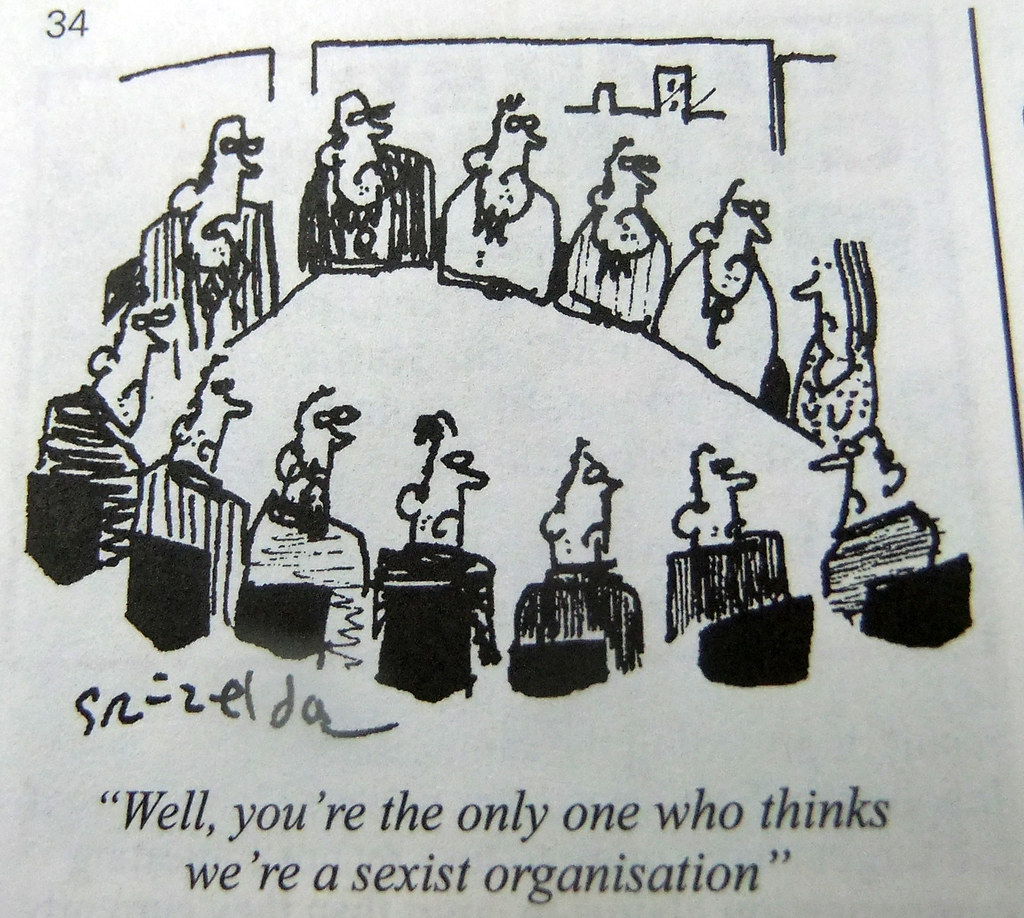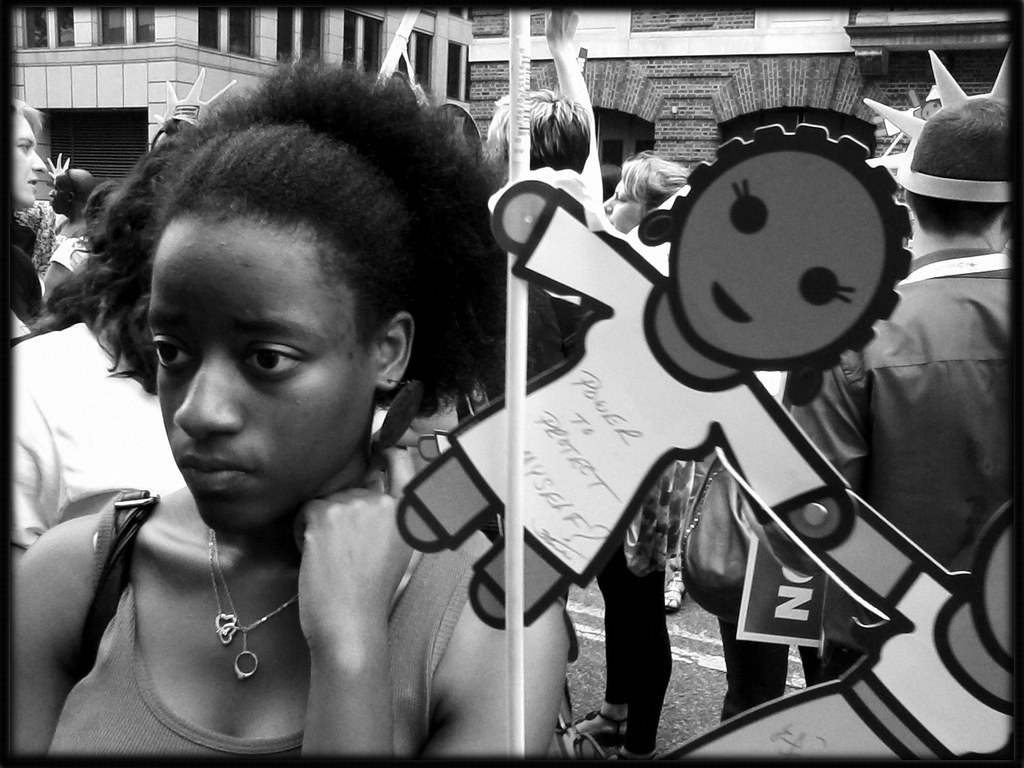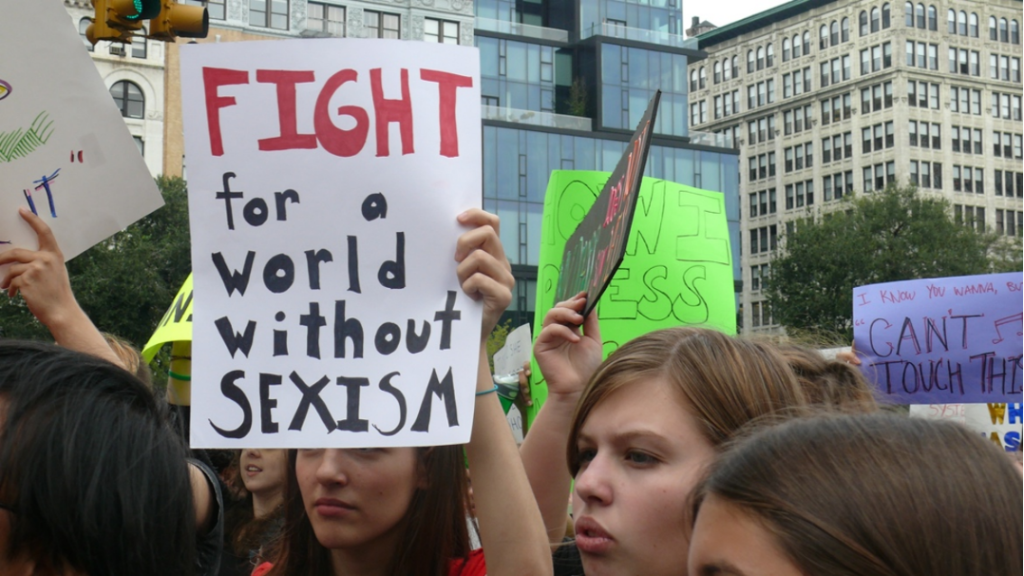Topic: Representation of Minorities and Women

“AM17 – Analytical Corner: Gender Equality and Structural Transformation in Rwanda” by International Monetary Fund is licensed under CC BY-NC-ND 2.0.
Structure plays a pivotal role in shaping and influencing the growth and day-to-day functioning of society. Nevertheless, the presence of structural incompleteness within society hinders the ability of both men and women to access equitable resources and experience fair treatment in social contexts. Hence, this blog will concentrate on doing a comprehensive examination of the dearth of structural equality inside the realm of the Internet. The initial observation highlights the contrasting portrayal of males and females within the platform, while also noting that search engines are amplifying this occurrence. Furthermore, it is imperative to do an analysis of the potential factors contributing to this phenomenon. Subsequently, elucidates the perils associated with the perpetuation of structural inequality. Finally, viable strategies for preventing or overseeing this type of occurrence are proposed.
The topic of discussion is to the identification and categorisation of inequalities:particularly in relation to the representation of women and minorities.
The persistence of structural inequality within media platforms has endured over an extended period and remains prevalent in contemporary times. The presence of gender inequality in media content can be attributed to the systematic underestimation and distortion of women. According to Mulvey’s (1975) gender and media gaze theory, there exists a significant disparity in the portrayal of males and females in visual media. Typically, male individuals tend to maintain direct eye contact with the camera, engaging in a prolonged gaze towards the audience during their observation. Nevertheless, the female protagonist positioned in front of the camera exhibits an inability to establish direct eye contact with the lens, so creating the illusion of being subjected to the gaze of the viewers.
Simultaneously, in accordance with Goffman (1979)’s feminine touch theory, women tend to engage in subtle tactile interactions with many little objects in the vicinity of the camera, including but not limited to flowers, necklaces, and their own facial features. This implies that female characters are often depicted with obstacles or opposition, resulting in the portrayal of hesitation and vulnerability through visual cues.

“lvwax_04a, Madame Tussauds Wax Museum, Las Vegas, Nevada” by lyng883 is licensed under CC BY 2.0.
Television has faced criticism from several perspectives due to its perpetuation of stereotypical portrayals of women, a bias that is prevalent to this dayEllis (2019). Television frequently portrays male characters as possessing qualities of intelligence, stability, and aggression, whereas female characters are generally depicted as meek, sensitive, and lacking in strength. Television and posters frequently focus on the portrayal of male characters’ strength, while concurrently emphasising the physical appearance and attractiveness of female characters. Simultaneously, this aligns with van Zoonen (1988)s assertion that women tend to be more prevalent in discussions pertaining to culture, nursing, and education, whilst men are more commonly found in discussions related to money, economics, and politics. Consequently, numerous media platforms employ stereotypes in their content, while also persisting in interpreting the information in a consistent manner for audiences that conform to these assumptions.
Nevertheless, this stereotype is also evident in search engines. The utilisation of search engine phrases related to women and minorities is characterised by commercialisation and sexualization. When entering the phrases “black girl” and “Asian girl” into the Google search engine, one may encounter explicit and sexually suggestive content of a sensitive nature. Nevertheless, Google categorises this type of material as highly reputable and widely consumed, hence prioritising its visibility to users. Google automatically sends push notifications to users, regardless of their prior engagement with pornography-related searches(Bains, 2022).
In a similar vein, it is observed that when conducting Google searches for terms such as “professor” and “lawyer,” the resulting photographs predominantly depict individuals of the male gender. Search engines perpetuate and amplify sexist and racial biases, thereby discriminating against and marginalising women and minority communities. This raises the question of whether the mastermind behind the explicit and implicit algorithmic bias in the search engines and media that people are exposed to on a daily basis is one of these large technology corporations.

“Asian Girl” by Daniel Gasienica is licensed under CC BY-NC-ND 2.0.
Potential factors contributing to this phenomenon.
Stereotypes can serve as a significant factor in elucidating the existence of structural inequality. According to the findings of Krems et al. (2022), there exists an implicit bias among researchers in the field of social science that favours women over men during their research endeavours. This implies that individuals, regardless of the circumstances, tend to prioritise the evaluation of male status before assessing the status of women. Google’s alleged sexism, in which women and minorities were less represented on its team than white males, is an illustration of this argument. (McQuate, 2022). In line with the findings of Kasumovic and Kuznekoff (2015), who investigated constructivist theories within societal contexts, it may be inferred that men have sexist beliefs towards women, particularly when women pursue careers in male-dominated professions.
According to the evolutionary perspective proposed by Von Rueden et al. (2010), in situations where women possess superior personal competence and social standing compared to their male counterparts, men tend to exhibit heightened hostility and animosity towards female competition. Certain individuals may exhibit antagonism and discrimination towards women to disrupt established hierarchies, thereby safeguarding their own social standing and attaining a sense of psychological tranquillity. Consequently, the portrayal of men’s elevated social standing relative to women has become a prevailing mode of communication in individuals’ daily experiences, unconsciously influencing their perceptions.

“2014_05_280022 – sexism” by Gwydion M. Williams is licensed under CC BY 2.0.
The detrimental effects of this phenomenon
The media perpetuates societal norms and expectations regarding the idealised representations of women and men, through presenting various portrayals and impacts associated with both genders. Nevertheless, the portrayal of these ideals has been confined to a constricting caricature of gender (Hentschel et al., 2019). The Internet and other platforms are actively shaping societal perceptions of ideal physical appearances for individuals of all genders and age groups, hence enticing viewers to internalise and conform to these standards. Consequently, when successive cohorts of youngsters see media content that portrays gender and ethnic minority stereotypes, they inadvertently reinforce and emulate such behaviours, perpetuating these stereotypes in their own lives. Simultaneously, this phenomenon exerts an influence on the societal experiences of women. Women who adhere to stereotypes may hinder individuals from fully expressing their emotions and opinions.
This implies that women could have a sense of inhibition towards embracing independence and self-assurance, thereby conforming to the conventional expectations associated with feminine attributes. This phenomenon of abuse may result in certain women being unable to outwardly express their refusal to accept beatings and emotional mistreatment from their partners, hence perpetuating their continued suffering. The emergence and occurrence of recessive stereotypes have become increasingly prevalent due to the widespread adoption of artificial intelligence and digital platforms. Society will witness the emergence of a period characterised by the prevalence of racism, sexism, and class-based discrimination in individuals’ lives.

“Power to Protect Myself” by scottmontreal is licensed under CC BY-NC 2.0.
What measures can be implemented to prevent or control such phenomena?
Over the course of several years, the global feminist movement, comprising numerous women and a minority of men, has encountered challenges in its efforts to confront the issue of sexism. The feminist movement has endeavoured to redress these disparities by means of organised demonstrations, advocacy initiatives, and legislative reforms (Burkett, 2023). Simultaneously, the women’s rights movement has fostered societal consciousness of the disparities arising from existence, scrutinising the various instances of intentional distortion of women’s portrayal on the Internet and social media platforms ref. The government, on the other hand, has the capacity to establish regulations that are more efficient and capable of being enforced. The objective is to protect and uphold the rights and interests of women in all aspects of life, while also curbing discriminatory practises and behaviours within companies. This can be achieved by granting the Labour Department the authority to conduct thorough reviews within these organisations.

“Fight for a world without sexism” by ctrouper is licensed under CC BY 2.0.
Consequently, recurring manifestations of diverse gender and racial portrayals across many platforms underscore the disparities between males and females, thereby perpetuating inequities for marginalised groups. The prevalence of these occurrences may be attributed to the underlying impact of technology corporations associated with these platforms on the perpetuation of stereotypes. Hence, it is imperative for individuals to acknowledge the presence of gender and racial disparities in their daily experiences, and collectively oppose the persistent propagation of such phenomena by major technology corporations.
Reference list:
Bains, J. (2022, December 6). Research Guides: Bias in Search Engines And Algorithms: Examples. Libguides.scu.edu. https://libguides.scu.edu/c.php?g=887434&p=6378511
Burkett, E. (2023). Women’s Rights Movement. In Encyclopedia Britannica. https://www.britannica.com/event/womens-movement
Ellis, K. (2019). Disability and Digital Television Cultures. 19–39. https://doi.org/10.4324/9781315755663
Goffman, E. (1979). Gender Advertisements. Proquest.
Hentschel, T., Heilman, M. E., & Peus, C. V. (2019). The Multiple Dimensions of Gender Stereotypes: A Current Look at Men’s and Women’s Characterizations of Others and Themselves. Frontiers in Psychology, 10(11). https://doi.org/10.3389/fpsyg.2019.00011
Kasumovic, M. M., & Kuznekoff, J. H. (2015). Insights into Sexism: Male Status and Performance Moderates Female-Directed Hostile and Amicable Behaviour. PLOS ONE, 10(7), e0131613. https://doi.org/10.1371/journal.pone.0131613
Krems, J. A., Merrie, L. A., Short, V., Duarte, K., Rodriguez, N. N., French, J. E., Sznycer, D., & Byrd-Craven, J. (2022). Third-Party Perceptions of Male and Female Status: Male Physical Strength and Female Physical Attractiveness Cue High Status. Frontiers in Ecology and Evolution, 10. https://doi.org/10.3389/fevo.2022.860797
McQuate, S. (2022, February 16). Google’s “CEO” image search gender bias hasn’t really been fixed. UW News. https://www.washington.edu/news/2022/02/16/googles-ceo-image-search-gender-bias-hasnt-really-been-fixed/
Mulvey, L. (1975). Visual Pleasure and Narrative Cinema. Screen, 16(3), 6–18. https://ia802801.us.archive.org/4/items/visual-pleasure-and-narrative-cinema/Laura-mulvey-visual-pleasure-and-narrative-cinema.pdf
Van Zoonen, L. (1988). Rethinking Women and the News. European Journal of Communication, 3(1), 35–53. https://doi.org/10.1177/0267323188003001003
Von Rueden, C., Gurven, M., & Kaplan, H. (2010). Why do men seek status? Fitness payoffs to dominance and prestige. Proceedings of the Royal Society B: Biological Sciences, 278(1715), 2223–2232. https://doi.org/10.1098/rspb.2010.2145
By Qi Lu
This work is licensed under Attribution-NonCommercial-NoDerivatives 4.0 International



